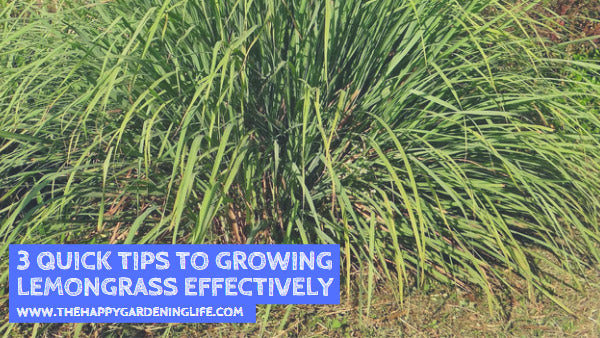
3 Quick Tips to Growing Lemongrass Effectively
Share
 Like most herbs, lemongrass is not that difficult to grow. Although it’s not a popular choice for growing, this herb is certainly full of surprises!
Like most herbs, lemongrass is not that difficult to grow. Although it’s not a popular choice for growing, this herb is certainly full of surprises!
Lemongrass is actually widely used in Asian cuisine to help enhance flavors and add more aroma to various dishes. It can also be found in many teas, soups and curries and even utilized as a medicinal herb at times.
Lemongrass comes in several varieties, and they have different uses. If you’re using it for cooking purposes, then you should opt for Cymbopogon citratusis since it goes well with food.
If it’s for tea drinking, then plant Cymbopogon flexuosus. Of course it’s a matter of preference, but growing the right variety will naturally bring better results.
Lemongrass is best grown outdoors in moist soil with some light shade and warmth. Putting this herb under full sun will produce longer and thicker leaves, while light shade will create thin leaves. For more advice on growing lemongrass, please check out these easy growing tips below.
Feel free to share this blog post by clicking the social buttons on this page!
Top 3 Tips to Growing Lemongrass Effectively
Tip 1: Growing Lemongrass From a Stalk
Buy a stalk of lemongrass at a local market and put it in a clear glass container of water. It should sit in a well-lit place for roots to develop. Roots should sprout in a few days.
The stalk can be planted in a small pot with potting soil when the roots have grown a bit, and the soil should be kept moist to the touch, but not soaked. This can be done inside and the plant can grow a little before being planted in the garden.
The plant should be kept in a well-lit place after potting. When the frost warning has passed, if this is applicable, the plant can go outside into the garden and can be fertilized. This plant likes heat and humidity, so growing lemongrass in a hot climate is a successful venture. If more than one stalk is planted when growing lemongrass outdoors, the stalks should be placed two to three feet apart.
2. Picking Lemongrass
If the lemongrass is to be used, stalks are cut below the swollen, white ends, leaving the roots. Leaves are just trimmed off. This can be done during the growing season.
One kind of lemongrass is for cooking, and another for making tea. Make sure to get the kind needed for its intended purpose when stalks are purchased. Cymbopogon citratusis is thicker in the stalk, and used for cooking. Cymbopogon flexuosus is for tea, and the plant is smaller in size. This kind of lemongrass can be grown from seed, which is cheaper than stalks.
One plant can grow enough for about 12 cm of stalk to be used in a season. A plant is mature at four to eight months, and can be cut for use or divided for propagation.
3. Spring Preparation for Growing Lemongrass
Cleaning up the plant and ridding it of old, dried up parts should be done in early spring. The old growth can simply be cut off just above the root. Some gardeners burn the plants, leaving the root ball intact. The new shoots explode afterwards, and the taste of the resulting lemongrass is just as good.
The soil clods should be broken up around the lemongrass plant and watering should begin when the weather warms up. Fine loamy soil is best, but fertilizer can enrich the soil and it should be well-drained. Insects and pests do not like lemongrass, a real bonus for growers.
Article Source: gardeningtipsnideas.com
